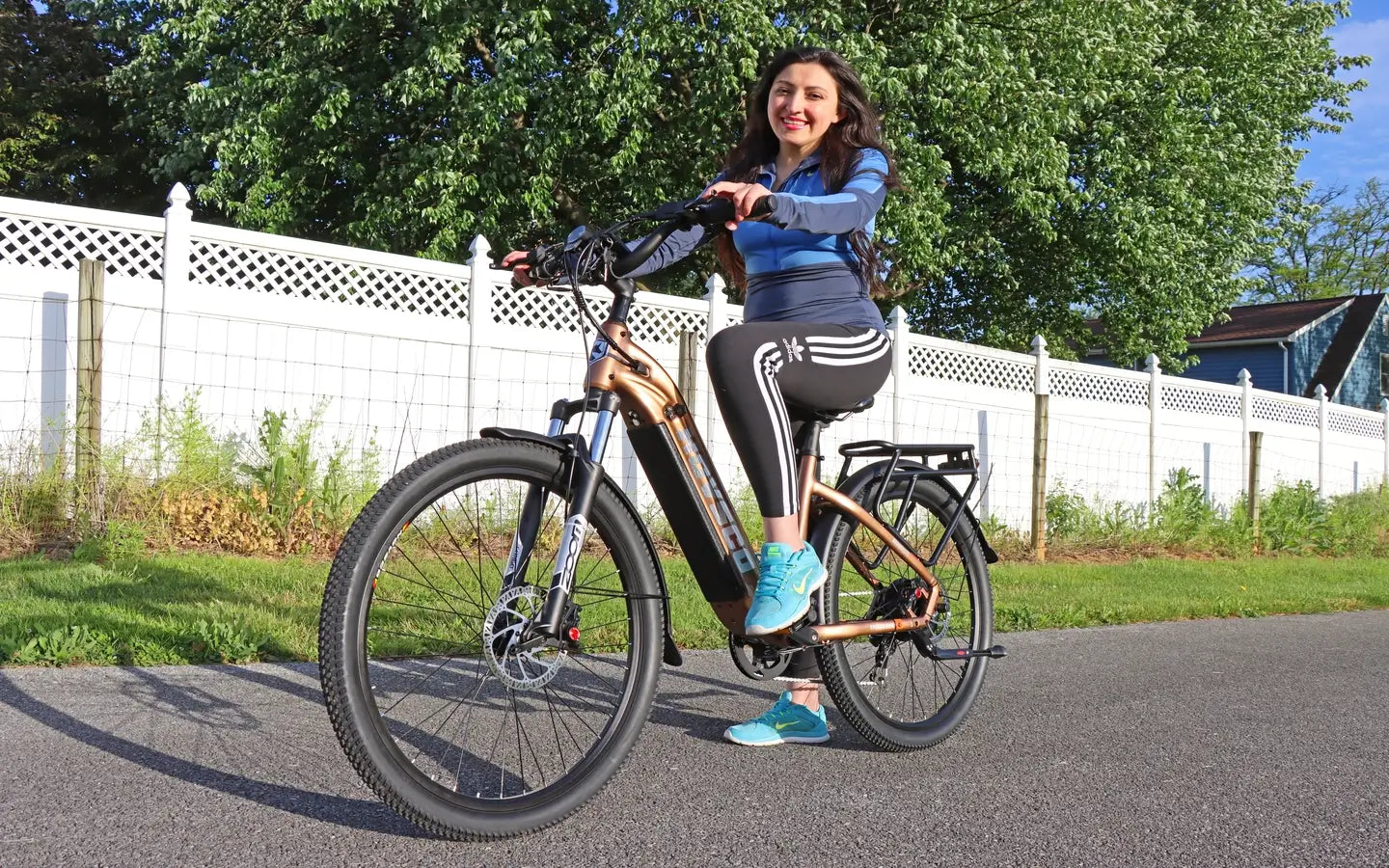
- by LiuJiazhu
What Benefits Do Cargo Bicycles Offer Urban Family Transportation?
- by LiuJiazhu
Cargo bicycles offer urban families efficient, eco-friendly transportation with ample storage, reduced costs, and improved maneuverability. They eliminate parking hassles, lower emissions, and enable safe child transport. Though bulkier than standard bikes, their practicality for school runs, errands, and traffic navigation makes them a sustainable, cost-effective alternative to cars for daily urban mobility.
Cargo bikes outperform cars in urban settings with lower costs, zero emissions, and easier parking. They bypass traffic jams, access bike lanes, and reduce reliance on fuel. While slower over long distances, their agility and practicality for short trips make them ideal for school drop-offs, grocery runs, and navigating dense city streets.
Urban families often face gridlock, parking fees, and rising fuel costs—issues cargo bikes sidestep entirely. A typical cargo bike can carry 2-4 children plus groceries, with load capacities ranging from 100kg to 200kg. Unlike cars, they require no insurance, registration, or expensive maintenance. For instance, a mid-tail cargo bike like the HOVSCO H8 offers 180kg payload capacity and fits standard bike racks, simplifying storage. Pro tip: Pair your cargo bike with waterproof panniers for weatherproof grocery hauls. Think of it as swapping a gas-guzzling SUV for a nimble, electric-assisted trolley that slips through traffic like a subway car avoiding delays. But what about safety? Modern cargo bikes feature reinforced frames, hydraulic brakes, and optional child safety harnesses, matching car-level security for short urban trips.
| Feature | Cargo Bike | Car |
|---|---|---|
| Monthly Cost | $20-$50 (maintenance) | $500+ (fuel, insurance) |
| Parking | Free at bike racks | $150-$300/month |
| CO2 Emissions | 0 (if non-electric) | 4.6 tons/year |
Cargo bikes save families thousands annually by eliminating fuel, parking, and insurance costs. With minimal maintenance fees and no loan payments, they offer 80-90% savings over car ownership. Electric models add slight charging costs but remain far cheaper than public transit passes or ride-shares.
Let’s crunch numbers: The average car costs $9,000/year in the U.S. when factoring depreciation, insurance, and fuel. A \$3,000 electric cargo bike, by contrast, costs just \$300 annually for maintenance and electricity—saving \$8,700 yearly. Even with occasional ride-shares for longer trips, families can slash transportation budgets. Pro tip: Use saved car payments to fund bike upgrades like puncture-resistant tires or extended warranties. For example, Portland’s “Cargo Bike Bonus” program offers rebates up to $1,200, making initial purchases more accessible. Practically speaking, cargo bikes also reduce indirect costs—imagine skipping gym memberships by integrating exercise into school runs. But are they durable? High-quality models like HOVSCO’s H10 endure 10,000+ miles with proper care, rivaling car lifespans in urban settings.
| Expense | Cargo Bike (Year 1) | Compact Car (Year 1) |
|---|---|---|
| Purchase/Lease | $3,000 | $5,000 |
| Fuel/Energy | $30 | $1,200 |
| Insurance | $0 | $1,500 |
Modern cargo bikes prioritize safety with reinforced frames, 5-point harnesses, and hydraulic brakes. Crash tests show enclosed box bikes protect kids similarly to car seats, with lower speed risks than vehicles. Proper training and adherence to weight limits make them safer than back-mounted child seats on standard bicycles.
Safety starts with design: European-standard cargo bikes undergo rigorous testing, including frontal impact simulations and stability checks at 25km/h. Models like the Urban Arrow Family include ISO-certified child seats, rain covers, and seatbelts—akin to a mobile bike car seat. Pro tip: Always mount a 160-lumen front light and rear reflectors for visibility, as 72% of bike-car collisions occur at intersections. Practically speaking, cargo bikes’ lower center of gravity (vs. bakfiets-style high boxes) prevents tip-overs—think of it as choosing a sports sedan over a top-heavy SUV for stability. But what about theft? Secure your bike with two locks: a U-lock through the frame and a chain lock around wheels. Some insurers like Velosurance offer $150/year policies covering theft and accident damage.
Cargo bikes thrive in cities with dedicated bike lanes, compact storage, and traffic avoidance. They utilize bike-friendly shortcuts cars can’t access, though narrow paths and curbside bike racks sometimes require dismounting. Cities like Amsterdam and Copenhagen optimize infrastructure with cargo bike parking hubs and priority traffic signals.
Urban planning increasingly accommodates cargo bikes—Portland’s 2030 Bike Plan mandates 3m-wide bike lanes to fit cargo models. Key measurements: Most cargo bikes are ≤1m wide, fitting standard lanes, but 2.5m-long models need careful cornering. Pro tip: Use apps like Komoot to plan routes avoiding steep hills or cobblestone streets that strain electric motors. Imagine your cargo bike as a kayak navigating river currents—bike lanes are your downstream channels, while car roads are turbulent rapids best avoided. But can they replace public transit? For trips under 5km, yes—65% of urban car trips are this short. For rainy days, add a canopy; HOVSCO’s WeatherShield attachment lets kids stay dry without obstructing the rider’s view.
Yes—studies show 68% of cargo bike owners reduce car usage, with 29% selling a car. They handle 90% of urban errands, saving families $7,000+ yearly.
Are electric cargo bikes worth the higher cost?Absolutely—electric assist eases hill climbs and extends range to 50km per charge. The added $1,000 cost pays itself off in 1-2 years via car cost savings.
How do cargo bikes perform in rainy weather?Waterproof covers, fenders, and disc brakes ensure safe operation. Models like HOVSCO H10 feature slip-resistant decks and heated grip options for all-season use.
Where can I park a cargo bike securely?Use bike lockers, dedicated cargo bike racks, or ground-floor office storage. Always lock through the frame and rear wheel with a Sold Secure Gold-rated lock.
Share:
Why Choose an Electric Bike for Adults and Kids for Family Mobility?
What Features Define A Heavy-Duty Cargo Bicycle?